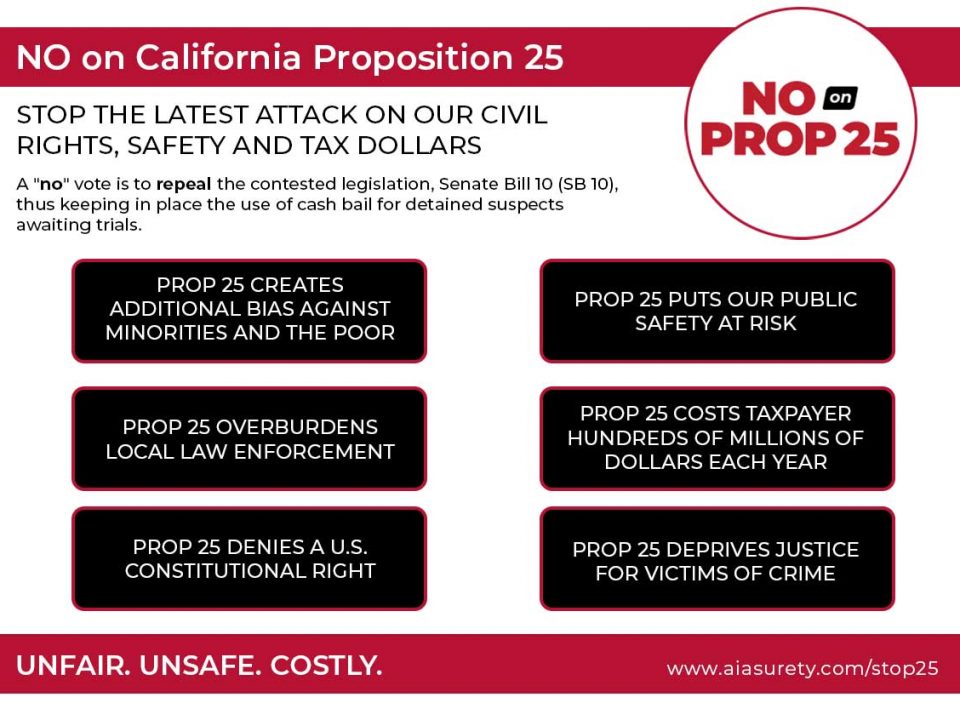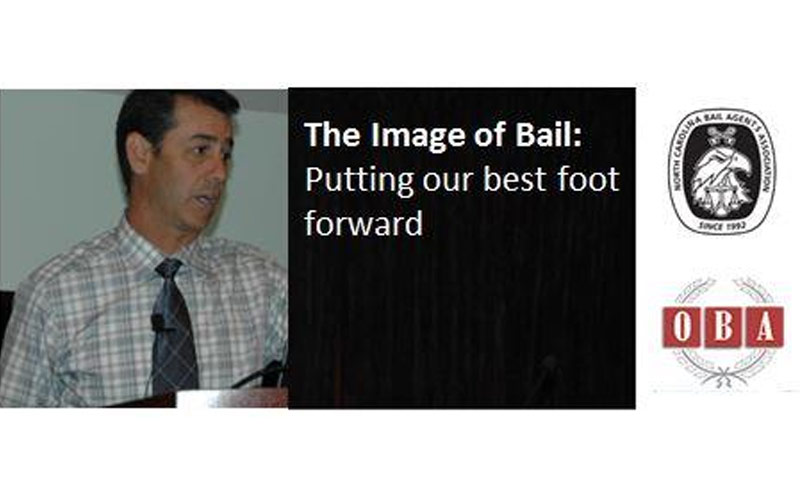- Need a bail bond?
- (800) 938-2245
- [email protected]
What’s Right With Louisiana’s Bail System?
THE NATION'S LARGEST BAIL BOND NETWORK
(800) 938-2245

FIND A LOCAL BAIL BOND AGENT NOW
The ExpertBail Network is comprised of the industry’s best, most experienced and most trusted bail bond agents.
- Nationwide bail bonds. Anywhere. Anytime.
- Largest network of local bail agents in every state bail can be written.
- Raising the standards in the bail industry.
- Fast and Reliable.
- Se Habla Español.

Last week, The Shreveport Times posted an op-ed article from Marjorie Esman, the Executive Director of the ACLU in Louisiana. Ms. Esman’s article was entitled, “What’s wrong with La.’s bail system?” In this article, Ms. Esman is not shy in sharing her disgust for the commercial bail bond industry. In fact, the basic theme of her article is that the ills of the criminal justice system in Louisiana are all due to the bail bond industry. While Ms. Esman is allowed to have and share her opinion, I thought it was important to correct a few of the misstatements in her article and shall we say, set the record straight on what is right with Louisiana’s bails system and the effective role that bail plays in the criminal justice system overall.
In the article, Ms. Esman quickly points out that jails are crowded because people can’t afford a bail bond. She states that 80 percent of those in pretrial status in the Orleans Parish Prison are there awaiting trial because they can’t afford a bail bond. The problem with this statement is that it is not only misleading, but also shows a lack of understanding of the purpose of jails in the first place. Jails are designed to hold pretrial detainees. So to say that the majority of the jail population consists of pretrial defendants waiting for trial should not be groundbreaking news to anyone. Additionally, what Ms. Esman’s fails to mention is that those defendants who are in jail in pretrial status, many are not eligible to be bailed out. There is a recent study that proves this point very definitively. And the most interesting thing about this study is that it was funded by the ACLU. In 2013 the JFA Institute conducted a study of the Los Angeles County Jail Population. Much like Louisiana’s jail, the pretrial population in Los Angeles County was found to be between 70%-80% of the total population. What is interesting and extremely eye opening about this study is that the researchers delved further into the make-up of the population to determine why those defendants were in custody and not out on bail. What they found is that there are many defendants who are in pretrial status who are not eligible to be released for a number of reasons. These reasons include but are not limited to the following:
- Defendants who are there on immigration holds – NO BAIL
- Defendants waiting transfer to another jail or prison – NO BAIL
- Defendants already sentenced for another crime – NO BAIL
- Defendants with outstanding warrants – NO BAIL
- Defendants with specific “no bail” designations – NO BAIL
- Defendants with assaultive crimes – NO BAIL
- Defendants who are classified as high security – NO BAIL
When all these types of defendants were eliminated from the pool of pretrial detainees eligible for bail, the 70-80% went down to about 12%. And those 12% do find a way to work with a commercial bail agent to secure their release. So next time, Ms. Esman wants to make a statement about the pretrial populations and why jails are crowded, I recommend that she review this study. Once again, it should be readily available to her because it was funded by her organization.
Next Ms. Esman talks about how much money that the big bad bail bond industry spends lobbying judges and legislature to increase bail amounts. This statement is also misleading. First, I have never seen a bill proposed by the commercial bail industry asking for higher bail amounts. The bail bond industry doesn’t operate in that way. Our industry actually supports lower bail amounts so that we can work more readily with families to help them secure their loved one’s release. To try and increase the bail amounts would not benefit the industry in any way. Secondly, Ms. Esman states that the bail bond industry spent $3.1 Million over a 10 year period to push its pro-bail agenda. While that number does seem rather large by itself, it is actually rather small when addressed in the proper context. For example, breaking that $3.1 Million over 10 years down to a per year number gives you $310,000 a year. Going even deeper, that $310,000 a year translates to only $25,833 a month. Now the bail industry needs to support 46 states that have commercial bail…so divide that $25,833 into 46 states and the monthly budget per state to support a pro-bail agenda is approximately $561 a month. Now, honestly, can the bail bond industry truly influence and sway legislators and consumers with that type of budget…hardly. To put things into a proper perspective, Ocean Spray Cranberry Growers have spent close to $400,000 a year in lobbying efforts over the past decade. Look out for the big bad Cranberry Lobby.
Lastly, what Ms. Esman fails to recognize and discuss in her article is the effectiveness of various release mechanisms. While she acknowledges the purpose of pretrial release to be about getting the defendant back to court and keeping the public safe, she doesn’t discuss what forms of release are the best at achieving this goal. If she had, readers would be able to see that based on every research study done on the subject, commercial bail has been proven to be the most effective form of pretrial release time and time again. Instead of sharing these important facts, she gets lost in her discussion of blaming commercial bail for overcrowded jails and unfair incarceration. If she were to look at the facts, she would see that defendants who are released on a commercial bail bond are significantly less likely to “fail to appear for court” (28% less likely to fail to appear, Helland and Tabarrok, 2004) than those defendants that are released through taxpayer funded pretrial release programs. Additionally, those released on a commercial bail bond are also less likely to remain a fugitive (53% less likely to remain a fugitive, Helland and Tabarrok, 2004) and be rearrested for an additional crime while out on pretrial release than those released through a public sector pretrial program. While arguing against commercial bail for ideological reasons is one thing, ignoring the facts and research is another…and I believe in this circumstance, especially when public safety is at stake, facts shouldn’t be overlooked.
Don’t get me wrong, Ms. Esman didn’t do anything wrong in bringing this important issue to the forefront. In fact, I applaud her for taking the time to share her opinion about Louisiana’s criminal justice system and for starting what could be a very important dialogue on the topic. I just wish that she would have approached it a little differently and provided a more thoughtful and factual based opinion than the one she did. Just pointing the finger at the commercial bail industry because you have a negative opinion about it is not thoughtful discourse or worthwhile editorial. That being said, I would invite Ms. Esman and her colleagues to have an open discussion about how to improve and build upon the positive components of Louisiana’s criminal justice system as opposed to seeking out blame for and embellishing its challenges. There is a place for both private and public pretrial solutions in Louisiana. Finding the middle ground between the two is what is necessary.
I believe that Ms. Esman and her colleagues at the ACLU should take a much deeper and more objective look at how commercial bail works with defendants and families across the country. They should better understand how commercial bail actually makes bail more affordable for poor defendants. Some experts have even suggested that bail helps remove any component of racial bias from the bail setting process (FREAKONOMICS: Can Bail Bond Dealers Reduce Discrimination? A Guest Post). With the proper outreach and level of understanding, there is no doubt in my mind that they will discover that we are aligned in more ways than they might think…but that is the topic of another blog.
If you have any questions about the bail bond industry or would like to receive copies of any of the research available visit our bail bond resource library. Additionally, if you would like a downloadable version of our popular BAIL FACTS video, please email our team at [email protected].
Posted by: Eric Granof
Below are links to several important bail bond facts:
Bail Bond Fact #1
Bail Bond Fact #2
Bail Bond Fact #3
Bail Bond Fact #4
Bail Bond Fact #5
Bail Bond Fact #6
Bail Bond Fact #7
Bail Bond Fact #8
Bail Bond Fact #9
Bail Bond Fact #10
Bail Bond Fact #11
Bail Bond Fact #12
Bail Bond Fact #13
Bail Bond Fact #14
Bail Bond Fact #15
Bail Bond Fact #16
Bail Bond Fact #17
Bail Bond Fact #18
Bail Bond Fact #19
Read more bail bond industry news: ExpertBail Agent Standing Out: A Conversation with Stephen Owens
Learn more about the bail bond process: Bail Bond Questions and Answers
Read one of ExpertBail’s bail bond blog posts: How Safe is Your Small Town?

How Safe is Your Small Town? Top 10 Most Violent Cities in America
November 17, 2014
Bail Bondsman “Guaranteeing” Justice in North Carolina
November 19, 2014What’s Right With Louisiana’s Bail System?

Last week, The Shreveport Times posted an op-ed article from Marjorie Esman, the Executive Director of the ACLU in Louisiana. Ms. Esman’s article was entitled, “What’s wrong with La.’s bail system?” In this article, Ms. Esman is not shy in sharing her disgust for the commercial bail bond industry. In fact, the basic theme of her article is that the ills of the criminal justice system in Louisiana are all due to the bail bond industry. While Ms. Esman is allowed to have and share her opinion, I thought it was important to correct a few of the misstatements in her article and shall we say, set the record straight on what is right with Louisiana’s bails system and the effective role that bail plays in the criminal justice system overall.
In the article, Ms. Esman quickly points out that jails are crowded because people can’t afford a bail bond. She states that 80 percent of those in pretrial status in the Orleans Parish Prison are there awaiting trial because they can’t afford a bail bond. The problem with this statement is that it is not only misleading, but also shows a lack of understanding of the purpose of jails in the first place. Jails are designed to hold pretrial detainees. So to say that the majority of the jail population consists of pretrial defendants waiting for trial should not be groundbreaking news to anyone. Additionally, what Ms. Esman’s fails to mention is that those defendants who are in jail in pretrial status, many are not eligible to be bailed out. There is a recent study that proves this point very definitively. And the most interesting thing about this study is that it was funded by the ACLU. In 2013 the JFA Institute conducted a study of the Los Angeles County Jail Population. Much like Louisiana’s jail, the pretrial population in Los Angeles County was found to be between 70%-80% of the total population. What is interesting and extremely eye opening about this study is that the researchers delved further into the make-up of the population to determine why those defendants were in custody and not out on bail. What they found is that there are many defendants who are in pretrial status who are not eligible to be released for a number of reasons. These reasons include but are not limited to the following:
- Defendants who are there on immigration holds – NO BAIL
- Defendants waiting transfer to another jail or prison – NO BAIL
- Defendants already sentenced for another crime – NO BAIL
- Defendants with outstanding warrants – NO BAIL
- Defendants with specific “no bail” designations – NO BAIL
- Defendants with assaultive crimes – NO BAIL
- Defendants who are classified as high security – NO BAIL
When all these types of defendants were eliminated from the pool of pretrial detainees eligible for bail, the 70-80% went down to about 12%. And those 12% do find a way to work with a commercial bail agent to secure their release. So next time, Ms. Esman wants to make a statement about the pretrial populations and why jails are crowded, I recommend that she review this study. Once again, it should be readily available to her because it was funded by her organization.
Next Ms. Esman talks about how much money that the big bad bail bond industry spends lobbying judges and legislature to increase bail amounts. This statement is also misleading. First, I have never seen a bill proposed by the commercial bail industry asking for higher bail amounts. The bail bond industry doesn’t operate in that way. Our industry actually supports lower bail amounts so that we can work more readily with families to help them secure their loved one’s release. To try and increase the bail amounts would not benefit the industry in any way. Secondly, Ms. Esman states that the bail bond industry spent $3.1 Million over a 10 year period to push its pro-bail agenda. While that number does seem rather large by itself, it is actually rather small when addressed in the proper context. For example, breaking that $3.1 Million over 10 years down to a per year number gives you $310,000 a year. Going even deeper, that $310,000 a year translates to only $25,833 a month. Now the bail industry needs to support 46 states that have commercial bail…so divide that $25,833 into 46 states and the monthly budget per state to support a pro-bail agenda is approximately $561 a month. Now, honestly, can the bail bond industry truly influence and sway legislators and consumers with that type of budget…hardly. To put things into a proper perspective, Ocean Spray Cranberry Growers have spent close to $400,000 a year in lobbying efforts over the past decade. Look out for the big bad Cranberry Lobby.
Lastly, what Ms. Esman fails to recognize and discuss in her article is the effectiveness of various release mechanisms. While she acknowledges the purpose of pretrial release to be about getting the defendant back to court and keeping the public safe, she doesn’t discuss what forms of release are the best at achieving this goal. If she had, readers would be able to see that based on every research study done on the subject, commercial bail has been proven to be the most effective form of pretrial release time and time again. Instead of sharing these important facts, she gets lost in her discussion of blaming commercial bail for overcrowded jails and unfair incarceration. If she were to look at the facts, she would see that defendants who are released on a commercial bail bond are significantly less likely to “fail to appear for court” (28% less likely to fail to appear, Helland and Tabarrok, 2004) than those defendants that are released through taxpayer funded pretrial release programs. Additionally, those released on a commercial bail bond are also less likely to remain a fugitive (53% less likely to remain a fugitive, Helland and Tabarrok, 2004) and be rearrested for an additional crime while out on pretrial release than those released through a public sector pretrial program. While arguing against commercial bail for ideological reasons is one thing, ignoring the facts and research is another…and I believe in this circumstance, especially when public safety is at stake, facts shouldn’t be overlooked.
Don’t get me wrong, Ms. Esman didn’t do anything wrong in bringing this important issue to the forefront. In fact, I applaud her for taking the time to share her opinion about Louisiana’s criminal justice system and for starting what could be a very important dialogue on the topic. I just wish that she would have approached it a little differently and provided a more thoughtful and factual based opinion than the one she did. Just pointing the finger at the commercial bail industry because you have a negative opinion about it is not thoughtful discourse or worthwhile editorial. That being said, I would invite Ms. Esman and her colleagues to have an open discussion about how to improve and build upon the positive components of Louisiana’s criminal justice system as opposed to seeking out blame for and embellishing its challenges. There is a place for both private and public pretrial solutions in Louisiana. Finding the middle ground between the two is what is necessary.
I believe that Ms. Esman and her colleagues at the ACLU should take a much deeper and more objective look at how commercial bail works with defendants and families across the country. They should better understand how commercial bail actually makes bail more affordable for poor defendants. Some experts have even suggested that bail helps remove any component of racial bias from the bail setting process (FREAKONOMICS: Can Bail Bond Dealers Reduce Discrimination? A Guest Post). With the proper outreach and level of understanding, there is no doubt in my mind that they will discover that we are aligned in more ways than they might think…but that is the topic of another blog.
If you have any questions about the bail bond industry or would like to receive copies of any of the research available visit our bail bond resource library. Additionally, if you would like a downloadable version of our popular BAIL FACTS video, please email our team at [email protected].
Posted by: Eric Granof
Below are links to several important bail bond facts:
Bail Bond Fact #1
Bail Bond Fact #2
Bail Bond Fact #3
Bail Bond Fact #4
Bail Bond Fact #5
Bail Bond Fact #6
Bail Bond Fact #7
Bail Bond Fact #8
Bail Bond Fact #9
Bail Bond Fact #10
Bail Bond Fact #11
Bail Bond Fact #12
Bail Bond Fact #13
Bail Bond Fact #14
Bail Bond Fact #15
Bail Bond Fact #16
Bail Bond Fact #17
Bail Bond Fact #18
Bail Bond Fact #19
Read more bail bond industry news: ExpertBail Agent Standing Out: A Conversation with Stephen Owens
Learn more about the bail bond process: Bail Bond Questions and Answers
Read one of ExpertBail’s bail bond blog posts: How Safe is Your Small Town?



